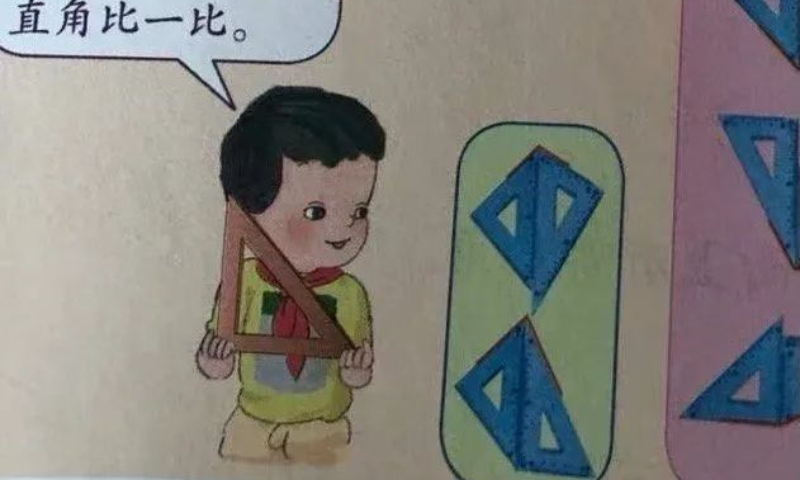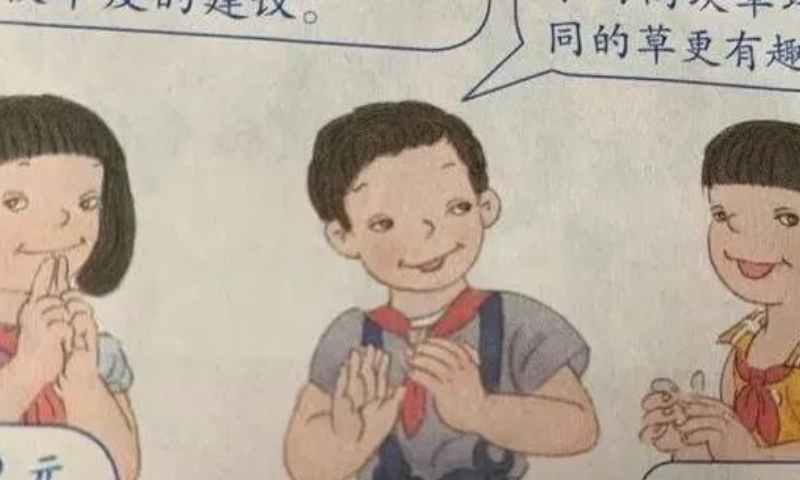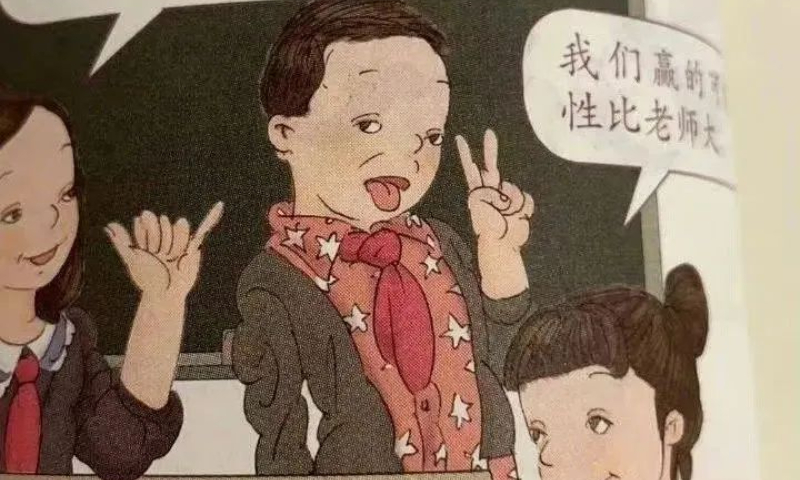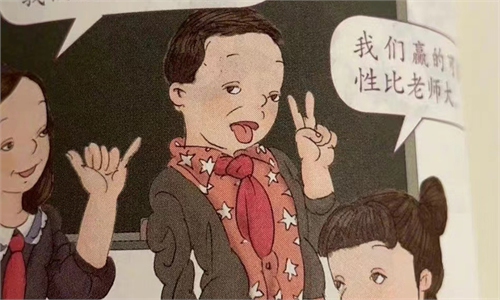China’s education ministry orders nationwide check of textbooks after ‘ugly illustration’ scandal sparks furor

Screenshot of the controversial textbook Photo:Sina Weibo
The Chinese Education Ministry on Saturday ordered a thorough inspection of elementary and middle school textbooks nationwide and urged People's Education Press to rectify issues flagged after illustrations in the state publisher's textbooks were embroiled in "ugly and pornographic illustration" controversy.
The ministry order came after the controversy evolved for several days and netizens found illustrations not only differed from common aesthetics but also included sexual connotations, with many suspecting that the textbooks did not undergo proper proofreading and review.
The publisher on Saturday said they had reflected on public concern and felt a deep sense of guilt. A work team has been established to rectify the issues raised.
They will selecting quality designers to replace all the illustrations in the elementary school math textbooks, and make sure new math textbooks can be used in the new semester in the fall.
The People's Education Press vowed to listen to parents and teachers' advice when drafting the replacement and will launch a review of other textbooks to identify potential problems and correct them.
The controversy started when viral snapshots of the math textbooks showed some of the children depicted in strange poses, including a crooked mouth, tongue sticking out and squinting eyes. Some were depicted wearing clothes mimicking US national flag.

Screenshot of the controversial textbook Photo:Sina Weibo
The state publisher apologized and announced a recall for all the textbooks involved. The textbook bureau of China's Ministry of Education also announced on Thursday that it will investigate the issue.
But the incident continued to ferment anger as the public uncovered more serious problems than just ugly figures. Photos of the textbooks showed boys seemingly wearing no pants and an explicitly depicted male reproductive organ. An illustration of children playing together depicted a boy putting his hands on a girl's breast and another pulling on a girl's skirt. A leaping girl's underwear is completely exposed in one picture.
"It is not about aesthetic...(the illustrations) are disguised malice," one Weibo user commented. "I remember adding mustache to illustration figures when I was young. Actually children pay even more attention to pictures than texts. What impression will children get for this 'garbage'? wrote another.
Besides public anger targeting the inappropriate textbooks that have been used for many years and "poisoned" generations of students since 2012, some netizens suspected the motivation of the illustrator and questioned how this content didn't not raise a red flag. .
Relevant authorities should conduct a thorough probe into the relations between the publisher and the illustrator Wu Yong, some netizens demanded, suspecting there is transfer of benefits. How could such an ill-minded person get the opportunity to create illustrations for books of such importance and such a wide audience? Some asked.

Screenshot of the controversial textbook Photo:Sina Weibo
The state publisher is a subsidy of China Education Publishing and Media Group which was established in 2010. The company had invested 12 companies and six of them were de-registered, according to corporate portal Qichacha.
The incident also prompted an online wave of exposing inappropriate content in children's books, mostly basic-level story and picture books.
Aesthetics could differ from person to person, but those illustrations exposed online are not about aesthetics at all. China has strict regulation over publishing industry and three rounds of proofreading and review remain the basic requirement. Yet there remains problematic contents being published and it is distressing to see such things appear in textbooks for this most vulnerable group, an industry insider told the Global Times on condition of anonymity.

